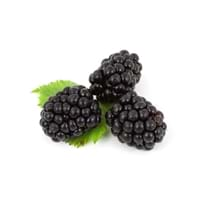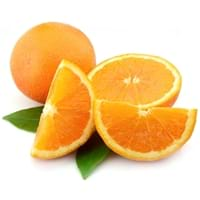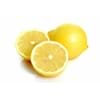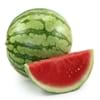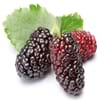Health Benefits
Cancer prevention, Heart care, Increases metabolic rate, Reduces stress, Treatment of dysentary, Treatment of skin Diseases
Arthritis treatment, Cancer prevention, Heart care
General Benefits
Digestive aid, Maintains healthy cholesterol level, Strengthens bones
Anti-inflammatory properties, Cures cough, Cures fever, Digestive aid, Healing of wounds, Maintains healthy cholesterol level
Skin Benefits
Hydrates skin, Skin rejuvenation, Skin revitalization
Anti-aging benefits, Brightens and lightens complexion, Reduces wrinkles, Treatment of dark spots
Hair Benefits
Promotes longer and healthier hair
Promotes longer and healthier hair, Protects hair, Rejuvenates scalp, Shiny hair
Allergy Symptoms
Facial muscle tension, Pressure in sinus, Respiratory congestion, Runny nose, Sneezing, Tingling sensation in wrist and face
Abdominal cramps, Hives, Itching, Nausea, Wheezing
Side Effects
Nausea, Vomiting, Might cause change of urine color
Allergic reaction, Skin rash, Possibly unsafe during pregnancy
Best Time to Eat
Best if taken as a breakfast (or empty stomach), As a snack in the late afternoon, Don't consume at night and before bed, Eat the fresh ones, avoid mixing with any other foods, don't eat after meal., Morning time (before lunch)
As a snack in the late afternoon, Eat the fresh ones, avoid mixing with any other foods, don't eat after meal., Morning time (before lunch), Strictly avoid empty stomach
Vitamin B5 (Pantothenic Acid)
Vitamin C (Ascorbic Acid)
Vitamin K (Phyllochinone)
Calories in Fresh Fruit with Peel
Not Available
Calories in Fresh Fruit without Peel
Not Available
Calories in Frozen Form
Not Available
Calories in Pie
Not Available
Season
Spring, Summer
Winter
Varieties
Prime Ark, Prime Jim, Illini Hardy, Kiowa, Shawnee, Apache, Arapaho, Chester, Hull, Natchez, Navaho and Triple Crown and Von
Clementine, Dancy, King Mandarin, Murcott, Ponkan, Robinson, Satsuma and Sunburst
Color
Purplish black
Orange
Inside Color
Magenta
Orange
Taste
Juicy, Sweet
Sweet-Sour
Origin
Asia, Europe, North America, South America
South-Eastern Asia
Grows on
Trees
Not Available
Soil Type
Well-drained
Well-drained
Climatic Conditions
Dry, Warm to hot climate
Sunny
Facts about
- There are around 2000 varieties of blackberries throughout the world.
- 80-85 degrees is the ideal temperature for its production.
- Leaves of blackberry tree are used to treat sore throats and mild inflammation of the gums.
- It is known by another name ' Mandarin'.
- Oil extracted from its peel is used in various skin and hair care products.
- Tangerines is also known as the ‘Christmas Orange’ because it is used to stuff kids' stockings..
Spirits
Yes
Not Available
Cocktails
Yes
Not Available
Top Producer
United States of America
China
Other Countries
China, New Zealand, Serbia, South Africa
Brazil, Iran, Italy, Japan, Korea, Morocco, Spain, Turkey
Top Importer
United States of America
China
Top Exporter
Mexico
Spain
Botanical Name
Rubus Fruticosus
Citrus reticulata
Synonym
Rubus Millspaughii or Rubus Laciniatus
Citrus clementina or Citrus nobilis
Subkingdom
Tracheobionta
Tracheobionta
Division
Magnoliophyta
Magnoliophyta
Class
Magnoliopsida
Magnoliopsida
Species
Rubus fruticosus
C. reticulata
Generic Group
Rose
Citrus fruit
Difference Between Blackberry and Tangerine
We might think that Blackberry and Tangerine are similar with respect to nutritional value and health benefits. But the nutrient content of both fruits is different. Blackberry and Tangerine Facts such as their taste, shape, color, and size are also distinct. The difference between Blackberry and Tangerine is explained here.
The amount of calories in 100 gm of fresh Blackberry and Tangerine with peel is 43.00 kcal and Not Available and the amount of calories without peel is Not Available and 53.00 kcal respectively. Thus, Blackberry and Tangerine belong to Low Calorie Fruits and Low Calorie Fruits category.These fruits might or might not differ with respect to their scientific classification. The order of Blackberry and Tangerine is Rosales and Sapindales respectively. Blackberry belongs to Rosaceae family and Tangerine belongs to Rutaceae family. Blackberry belongs to Rubus genus of Rubus fruticosus species and Tangerine belongs to Citrus genus of C. reticulata species. Beings plants, both fruits belong to Plantae Kingdom.
